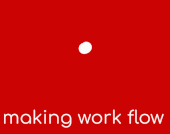
Equipment leasing is all about flexibility in your business and, as we move into a new post-pandemic world, businesses need more flex than ever. As we enter the final quarter of 2021, there’s a growing buzz about returning to the office, yet Google’s community mobility reports show that workplace activity is still only at 51% of its pre-pandemic levels in the nation’s capital. But it’s looking unlikely that we will ever go back to working 5 days a week, 7 hours a day in the same office again.
What will the return to work look like?
According to the ONS, 85% of adults currently home working prefer the option of a hybrid return to the office. Other surveys place this percentage much higher, such as that by US job board growmotely.
This step towards increased remote working isn’t just a bottom-up approach. In a survey of 50 firms by Marie Claire at the height of the lockdown last year, 43 of them said they are more likely to be adopting a new hybrid approach to working that enables staff to work from home several days a week. One year on, and a CNBC report shows that not much has changed. It’s now expected that just under half of companies will adopt a hybrid approach to returning to the office.
Some corporations such as Twitter and Slack have already announced that they will give all employees the option of working from home. Meanwhile, Salesforce has announced their plan for ongoing hybrid working.
Whilst many still don’t know what their return to the office looks like, we can be sure that it’ll be a far cry from the pre-pandemic routine.
The importance of flexibility
These changes mean that flexibility is more important than ever for any organisation serious about attracting and retaining talented employees. However, there’s a cost to providing this level of flexibility. To avoid wasting funds tied up in surplus equipment leases, businesses need similar flexibility from their suppliers.
For some businesses, even 30 people working from home may represent up to 20% of their workforce and such a hefty dent in the numbers coming through the doors every day is likely to make an impact on an organisation’s demands for services such as printing. These requirements won’t be as static as they once were. Organisations will need to adjust their provision according to the flow of employees through the office in any given period. Those businesses with 90% of their staff at their desks full time will have printing requirements more closely matched to pre-pandemic levels than those who are only seeing around 30% of staff in the office on any one day.
How ASL Flex is supporting flexible businesses
With ASL Flex your business doesn’t need to be hamstrung by lease contracts for equipment you’re not using. You can choose to reduce your rental fleet or increase it within agreed parameters, reflecting the average number of staff choosing to work in the office at any one time. Should a new team be established where the prevailing intention is to work on-site, the fleet can be increased to meet their needs, and then, should that team be disbanded, or distributed to other sites, the print rental fleet can reflect this decrease in headcount, cutting back on maintenance and servicing costs too.
ASL Flex is giving businesses greater flexibility and control of their outgoings, whilst enabling organisations to meet their ever-changing needs.
For more information on ASL Flex, and how it can support you with a full return to the office, or a hybrid return to the office, visit our website at ASL Flex | ASL Group (asl-group.co.uk)

